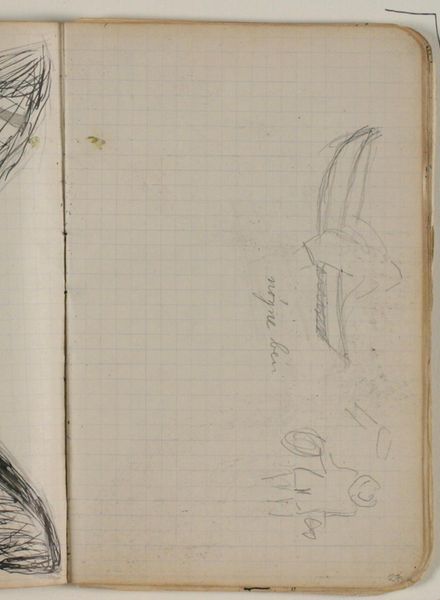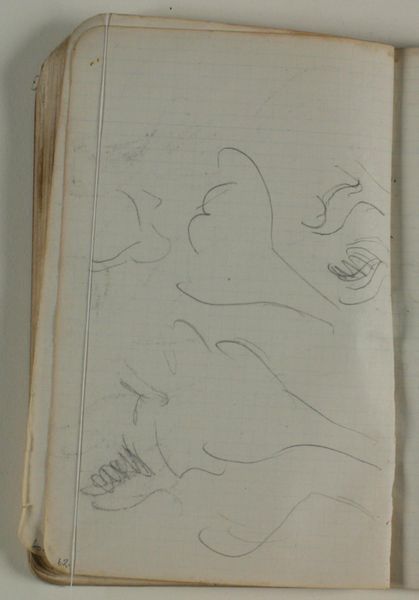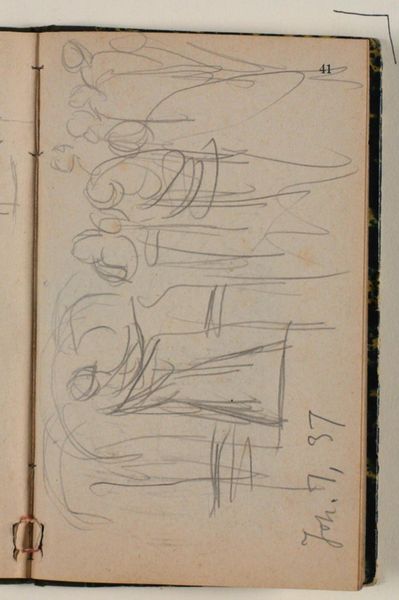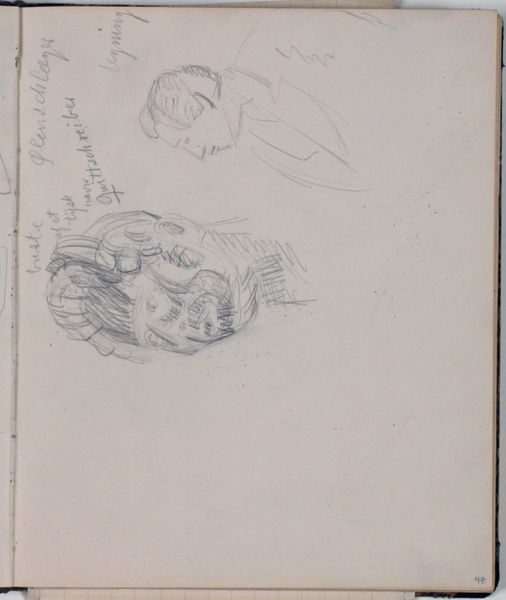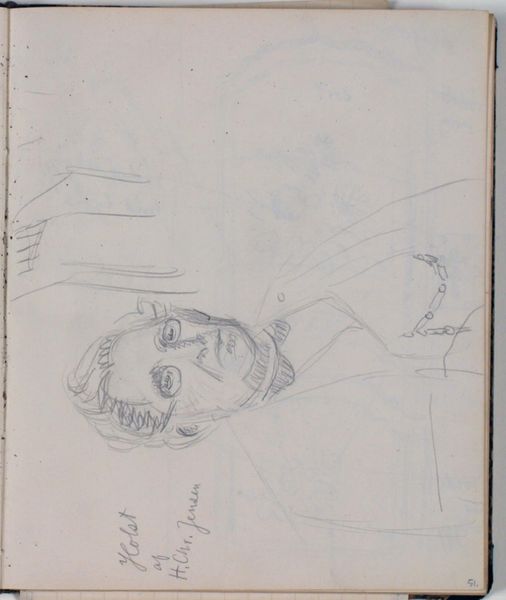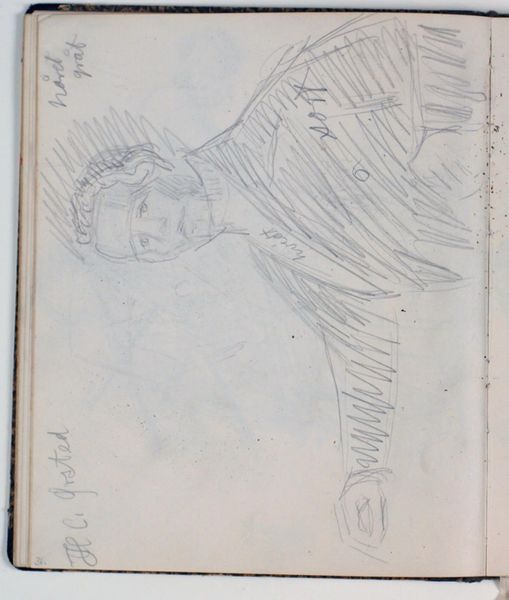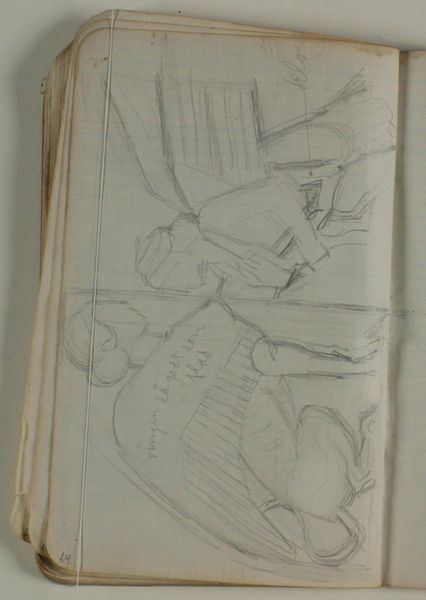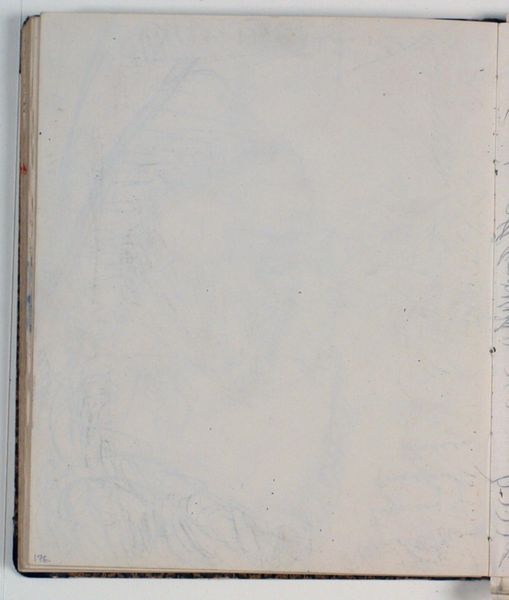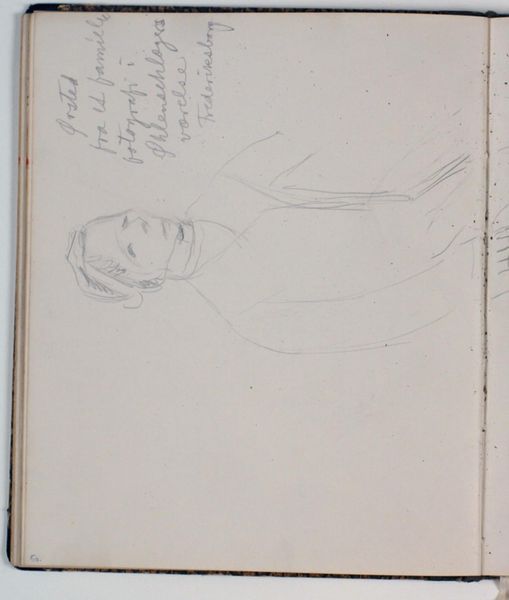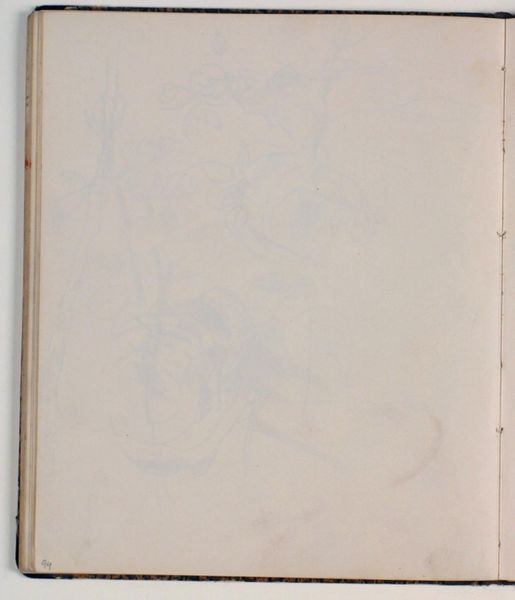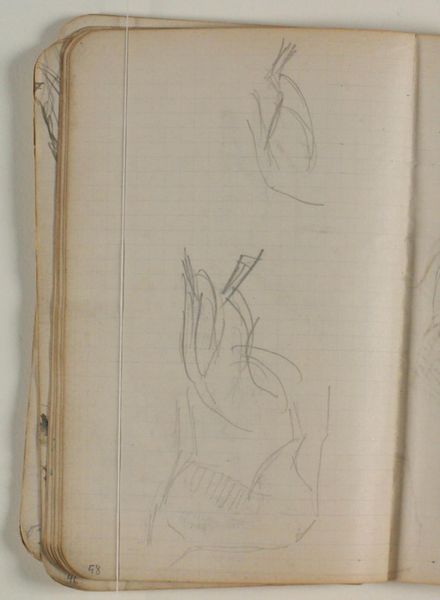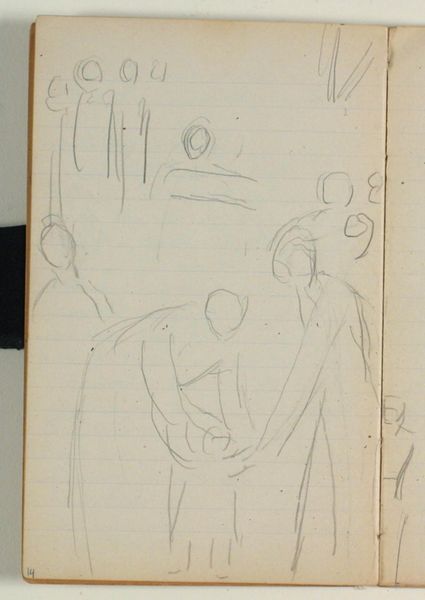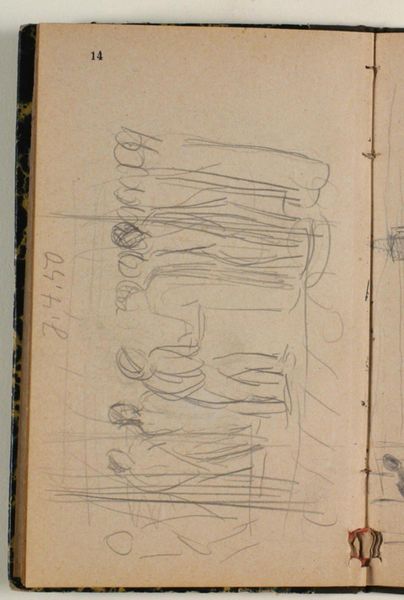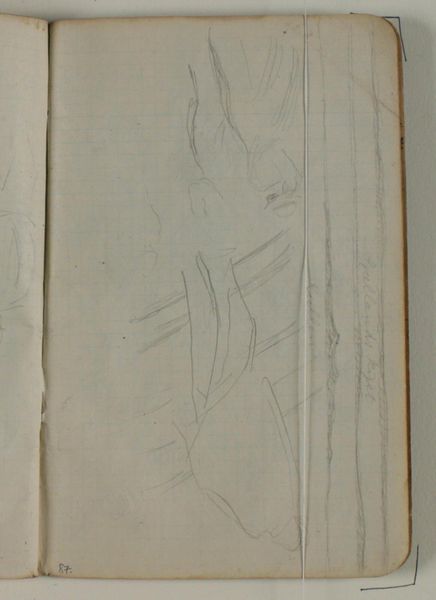
Studie efter D. C. Bluncks "Danskere i Osteriet La Gensola" 1837 på Thorvaldsens Museum. Farveangivelser 1930 - 1936
0:00
0:00
Dimensions: 226 mm (height) x 185 mm (width) x 112 mm (depth) (monteringsmaal), 221 mm (height) x 184 mm (width) (bladmaal)
Curator: Immediately striking is how fragile this work appears; the paper seems thin and well-worn. Editor: Indeed. This is a drawing by Niels Larsen Stevns, created sometime between 1930 and 1936. It's titled "Studie efter D. C. Bluncks 'Danskere i Osteriet La Gensola' 1837 på Thorvaldsens Museum. Farveangivelser"—quite a mouthful! Curator: Colour indications! Fascinating to see the artist breaking down a complex painting, likely for study, into colour notes and gestural forms. I mean, what’s with “lips”? So curious! Editor: Exactly! It almost feels like a deconstruction, a reverse-engineering of Blunck's original scene. Stevns seems focused on distilling the essence of the composition through these annotated color studies. And that is exactly how a work is received, framed, disseminated. Curator: The casualness makes me imagine the artist sitting there, sketchbook in lap, trying to quickly grasp something essential. A moment in time, really, captured as fleeting impressions. A great example is the writing next to one of the people being depicted here. A certain part of the skirt and skin and eyes and all were apparently perceived to be ‘Gulhvide bakke’. And isn’t it kind of funny for an audience listening in and trying to pick up some deep stuff just overhearing somebody talking about these light skinned faces or whatever! Editor: The use of pencil and watercolour contributes to that sense of immediacy. There's no pretense, it is like Stevns laid bare his creative process, even its rougher edges! Curator: Definitely, and viewing Stevns work in the context of the period in which it was conceived sheds some light onto how many artists viewed their role back in the day, even to our contemporary art scene and its influences. We tend to think everything is very individual when everything exists within a certain political structure. Editor: Well said. Ultimately, this drawing is a very human record of the artist wrestling with history, color, and form. The work reminds me to be inquisitive in life.
Comments
No comments
Be the first to comment and join the conversation on the ultimate creative platform.
